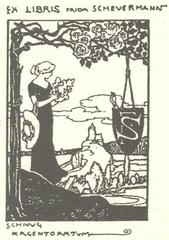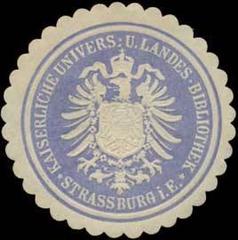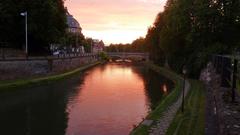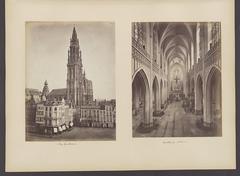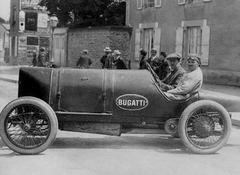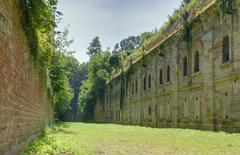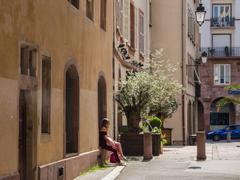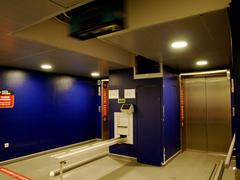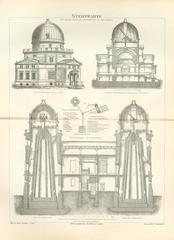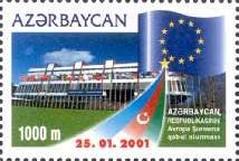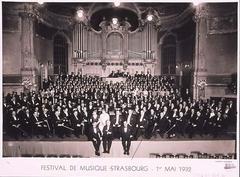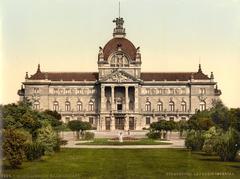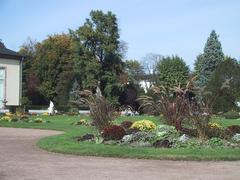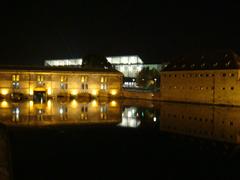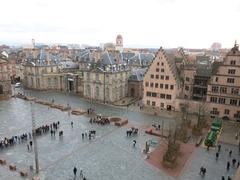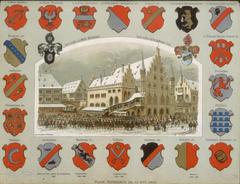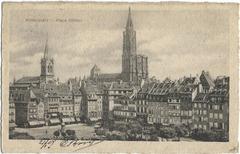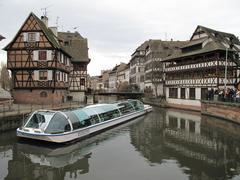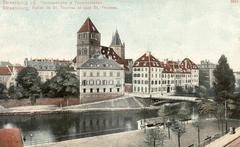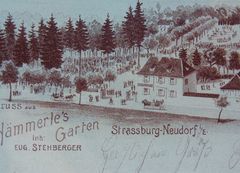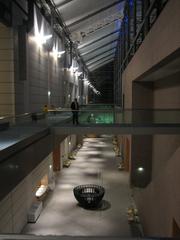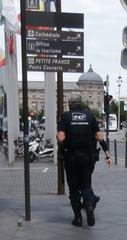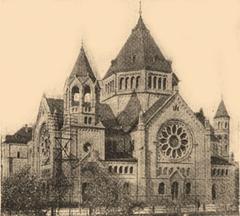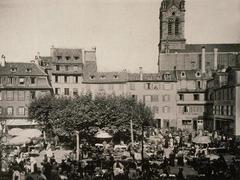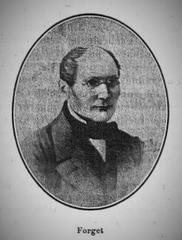
Visiting the Stolperstein for Maurice Cytrynowicz in Strasbourg, France: Tickets, Hours, and Tips
Date: 03/07/2025
Introduction
Strasbourg’s rich, layered history is brought to life through the Stolpersteine (“stumbling stones”) project—Europe’s largest decentralized memorial to victims of Nazi persecution. Among the city’s many Stolpersteine is the one dedicated to Maurice Cytrynowicz, a young Jewish man whose life was tragically cut short during the Holocaust. This small brass plaque, embedded in the sidewalk where Maurice once lived, invites passersby to reflect on the personal stories behind this immense tragedy.
This comprehensive guide provides everything you need to know about the Maurice Cytrynowicz Stolperstein: its historical significance, location, visiting tips, cultural impact, and practical advice to ensure a meaningful and respectful visit (stolpersteine.lautre.net; Batorama; Wikipedia).
Contents
- Introduction
- The Stolpersteine Project: History and Philosophy
- Stolpersteine in Strasbourg
- The Story of Maurice Cytrynowicz
- Visiting the Maurice Cytrynowicz Stolperstein
- Cultural and Commemorative Significance
- Practical Visitor Tips
- FAQ
- Visuals and Media
- Conclusion
The Stolpersteine Project: History and Philosophy
Initiated by German artist Gunter Demnig in the early 1990s, the Stolpersteine project is the world’s largest decentralized memorial. Each Stolperstein is a 10-centimeter concrete cube topped with a brass plate, engraved with the victim’s name, birth date, fate, and, if known, date and place of death. The stones are placed at the last freely chosen residence or workplace of the individual, integrating personal memory into public space (Wikipedia; stolpersteine.fr).
The project’s guiding principle is rooted in the Talmud: “A person is only forgotten when their name is forgotten.” Stolpersteine restore names and stories to those whom the Nazis sought to erase, inviting passersby to “stumble” not physically, but in thought, prompting reflection (germanyinusa.com).
Stolpersteine in Strasbourg
Strasbourg, with its complex Franco-German heritage and significant Jewish history, began installing Stolpersteine in May 2019. The local association Stolpersteine 67 coordinates research, installation, and educational outreach, collaborating with historians, families, and municipal authorities. As of 2025, 92 Stolpersteine commemorate victims at 42 addresses throughout the city (stolpersteine.lautre.net).
The stones honor not only Jewish victims but also Roma, political dissidents, LGBTQ+ people, people with disabilities, and others persecuted by the Nazi regime. This personal, decentralized approach to remembrance brings history into daily life and fosters ongoing reflection (franceinfo.fr).
The Story of Maurice Cytrynowicz
Maurice Cytrynowicz was born on October 25, 1923, in Altona, Germany, to Celad Gdalia and Rivka Cytrynowicz. He lived at 17 rue du Marais Kageneck in Strasbourg, where he worked as an apprentice mechanic. Unmarried and with no children, Maurice was deported during the Nazi occupation from Drancy transit camp on Convoy No. 51 on March 6, 1943, to Sobibor-Majdanek in Poland. He was murdered at Majdanek camp on March 11, 1943, at just 20 years old (stolpersteine.lautre.net).
His Stolperstein, placed at his last known address, serves as a poignant, tangible memorial for both locals and visitors.
Visiting the Maurice Cytrynowicz Stolperstein
Location and Accessibility
The Stolperstein is embedded in the sidewalk at 17 rue du Marais Kageneck, Strasbourg. It is easily accessible by foot, bike, or public transit, and is part of a network of Stolpersteine spread across the city’s residential neighborhoods (Batorama).
- Location: 17 rue du Marais Kageneck, Strasbourg
- How to Find More Stones: Interactive maps are available through Stolpersteine 67, and local tourist offices can provide additional guidance.
Visiting Hours and Tickets
- Hours: Accessible 24/7, as Stolpersteine are public memorials.
- Admission: Free; no tickets or reservations required.
Guided Tours and Special Events
Local organizations offer guided walking tours that feature Stolpersteine and Strasbourg’s Holocaust history, often including stories of individual victims. Special remembrance events are held on Holocaust Memorial Day and other dates of significance.
Nearby Attractions
Combine your visit with other historical sites such as the Strasbourg Cathedral, Alsatian Museum, or the European Parliament to gain broader context on the city’s heritage (Little Holidays).
Cultural and Commemorative Significance
Stolpersteine democratize remembrance by integrating memory into everyday life. Each plaque not only honors an individual but also serves as an educational tool, prompting reflection and dialogue among residents and visitors. For many families, Stolpersteine “replace a grave,” providing a physical site for mourning and remembrance (Batorama).
The project has sparked debate in some municipalities, leading to adaptations such as larger “Stolperschwellen” (stumbling thresholds) at sites of mass deportation (Wikipedia).
Practical Visitor Tips
- Dress: Wear comfortable shoes for walking.
- Planning: Use digital maps or audio guides (such as the Audiala app) for self-guided or thematic tours.
- Accessibility: Most Stolpersteine are flush with the pavement; check in advance if you have mobility challenges.
- Behavior: Approach with respect; pause to read the inscription, and consider leaving a small stone or flower as a gesture of remembrance.
- Photography: Permitted, but be discreet and avoid obstructing pedestrian traffic.
Frequently Asked Questions (FAQ)
Q: Where is the Maurice Cytrynowicz Stolperstein located?
A: Outside 17 rue du Marais Kageneck, Strasbourg. Consult Stolpersteine 67 or local tourist centers for a map.
Q: Are there visiting hours or admission fees?
A: No; the memorial is publicly accessible at all times and free to visit.
Q: Are guided tours available?
A: Yes; several organizations offer guided tours focusing on Stolpersteine and Holocaust history.
Q: Can I take photographs?
A: Yes, but be mindful of others and local residents.
Q: Is the site accessible to people with disabilities?
A: Stolpersteine are typically flush with the pavement, but some sidewalks may be uneven.
Visuals and Media
- Photo suggestion: “Maurice Cytrynowicz Stolperstein memorial stone in Strasbourg sidewalk”
- Map: Highlighting the location of the Stolperstein within the city center
- Virtual tours: Explore online resources and virtual walkthroughs via Stolpersteine 67
Conclusion
The Maurice Cytrynowicz Stolperstein in Strasbourg stands as a powerful testament to the individuals whose lives were shattered by the Holocaust. As part of the wider Stolpersteine project, this small but significant memorial reconnects modern visitors with personal histories, transforming everyday spaces into sites of reflection and education.
Accessible year-round, the Stolperstein offers a unique, contemplative way to engage with Strasbourg’s complex past. Enhance your visit by exploring other memorials, joining guided tours, or using digital resources like the Audiala app. In honoring Maurice Cytrynowicz and countless others, we help ensure that their names—and their stories—are never forgotten.

